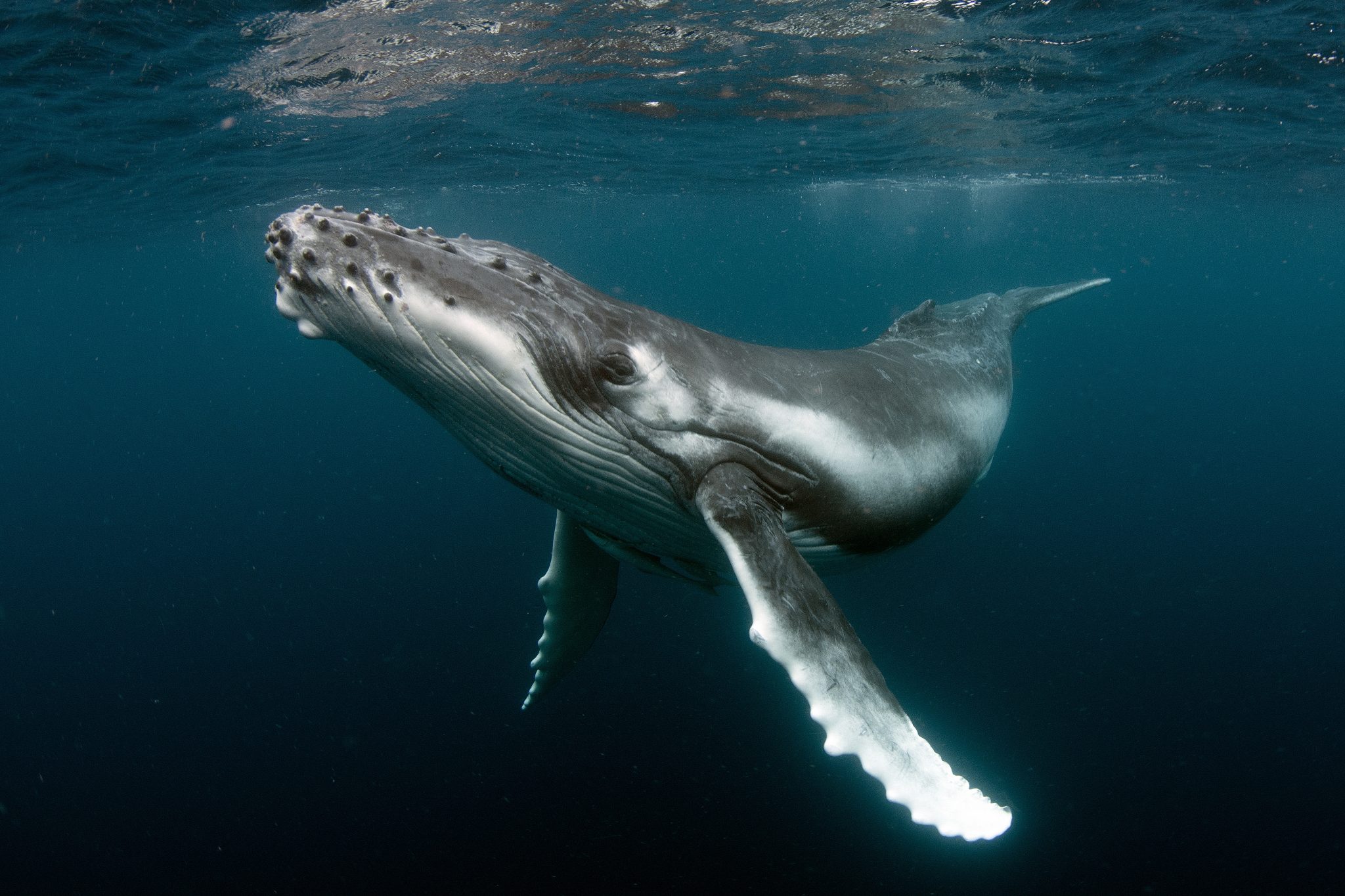
The Humpback Whale is a species of baleen whale. Adults range in length from 12–18m and weigh around 25–40 tonnes. They have a distinctive body shape, with long pectoral fins and a knobbly head.
They are known for breaching and other surface behaviours, making them popular with whale watchers. Males produce a complex song lasting 10 to 20 minutes, which they repeat for hours at a time.
Humpback Whales typically migrate up to 25,000 km each year including an annual migration along the east and west coast of Australia. Most migrate north from June to August (the best time to see them), and back towards the Southern Ocean from September to November. They feed in polar waters and migrate to tropical or subtropical waters to breed and give birth. Their diet consists mostly of krill and small fish.
Like other large whales, the Humpback was a target for the whaling industry. The species was once hunted to the brink of extinction; its population fell by an estimated 90% before a 1986 moratorium. Entanglement in fishing gear, collisions with ships, noise pollution and climate change continue to affect the species.
Thy are currently listed as vulnerable under the Environment Protection and Biodiversity Conservation (EPBC) Act, 1999.
